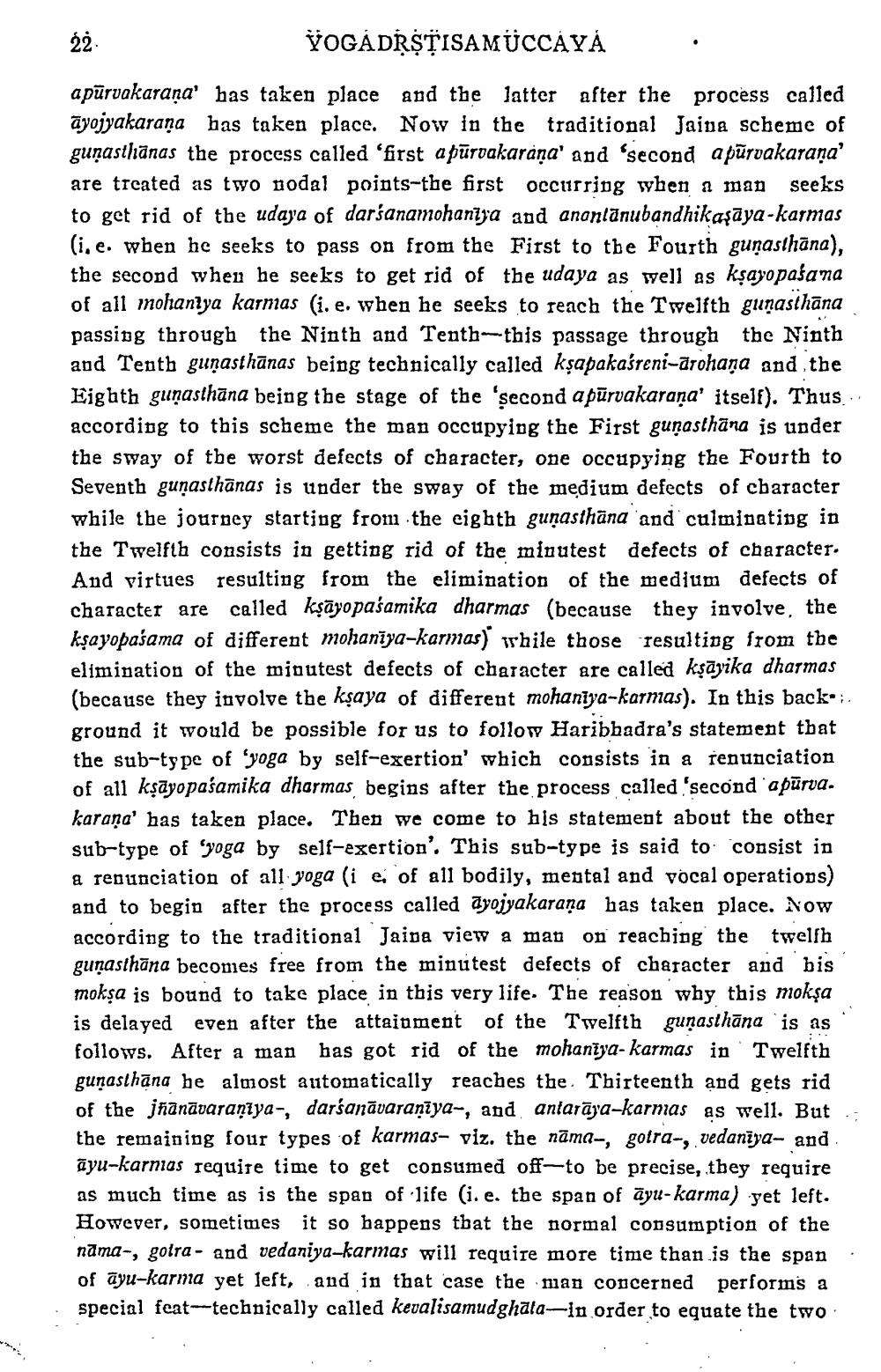________________
YOGÁDRSTISAMÜCCAYA
apūrvakaraṇa' has taken place and the latter after the process called ayojyakarana has taken place. Now in the traditional Jaina scheme of gunasthānas the process called 'first a pūrvakaraña' and 'second a pūrvakarana' are treated as two podal points-the first occurring when a man seeks to get rid of the udaya of darśanamohanīja and anonlānubandhikasāya-karmas (i, e. when he seeks to pass on from the First to the Fourth gunasthāna), the second when he seeks to get rid of the udaya as well as kşayopasana of all mohanlya karmas (i. e. when he seeks to reach the Twelfth gunasthāna passiog through the Ninth and Tenth-this passage through the Ninth and Tenth gunasthānas being technically called kşapakabreni-Orchana and the Eighth gunasthāna being the stage of the 'second a pūrvakaraṇa' itself). Thus. according to this scheme the man occupying the First gunasthāna is under the sway of the worst defects of character, one occupying the Fourth to Seventh gunasthānas is under the sway of the medium defects of character while the journey starting from the eighth gunasthana and culminating in the Twelfth consists in getting rid of the minutest defects of character. And virtues resulting from the elimination of the medium defects of character are called kṣāyopaśamika dharmas (because they involve, the kşayopašama of different mohanīya-karmas) while those resulting from the elimination of the minutest defects of character are called kṣāyika dharmas (because they involve the kşaya of different mohaniya-karmas). In this back :. ground it would be possible for us to follow Haribhadra's statement that the sub-type of 'yoga by self-exertion' which consists in a renunciation of all ksāyopaśamika dharmas begins after the process called 'second apūrva. karana' has taken place. Then we come to his statement about the other sub-type of Syoga by self-exertion'. This sub-type is said to consist in a renunciation of all yoga (i e of all bodily, mental and vocal operations) and to begin after the process called ayojyakarana has taken place. Now according to the traditional Jaipa view a man on reaching the twelsh gunasthāna becomes free from the minutest defects of character and bis moksa is bound to take place in this very life. The reason why this mokşa is delayed even after the attainment of the Twelfth gunasthāna is as follows. After a man has got rid of the mohaniya-karmas in Twelfth gunasthāna he almost automatically reaches the Thirteenth and gets rid of the jñānāvaraniya-, darśanāvaranīya-, and antarāya-karmas as well. But the remaining four types of karmas- viz. the nāma., gotra-, vedaniya- and āyu-karnias require time to get consumed off-to be precise, they require as much time as is the span of life (i. e. the span of @yu-karma) yet left. However, sometimes it so happens tbat the normal consumption of the náma-, goira- and vedaniya-karmas will require more time than is the span. of ayu-karma yet left, and in that case the nian concerned performs a special feat-technically called kevalisamudghala--in order to equate the two




